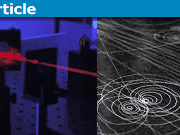Aiming High and Managing Distractions as Keys to Success for Science Majors
Over the years, I’ve noticed some distinct trends among the physics and chemistry majors I’ve mentored and worked with.
Those with GPAs in the 3.8-4.0 range vary with respect to other habits, but they are very intentional in two things:
Table of Contents
1) They aim high from the first day of the semester. Test scores close to 90% signal a problem to them.
They begin considering what to do differently and how to work harder. They really want to build a course average closer to 95% (assuming an A is 90%) to have a significant margin for error when they get to the final exam. They know what score they need on the final when the time comes, and they often tell me things like, “All I need on the final is a 75% to earn an A in this course.” On the rare occasions when they need the “last-minute miracle” to salvage an A in the course, they usually get it as a result of working hard from the first day of class.
2) They are very diligent about managing distractions to keep studying as a very high priority.
They take care to weigh commitments like employment, recreation, sports, etc. so they are sure they can study 2-3 hours outside of class for each class hour. They are more likely to live on campus or near campus to reduce travel time and expenses. They are more likely to commute via foot, bike, or bus due to the financial and time overhead (parking, repairs) associated with driving, particularly in their first couple years of college. They are more likely to have a meal plan so as not to waste too much time buying, preparing, and cleaning up after meals. They jealously guard their preparation time against outside distractions. They are also careful to only schedule 12-15 credit hours each semester in the first place.
These are the students most likely to be admitted to places like Harvard, MIT, and whatever their top choices of grad schools might be.
In contrast, Physics and Chemistry majors who tend to fall closer to the 3.5-3.8 GPA range are less zealous, but still intentional in two things:
1) They are not content with test grades or cumulative course grades anywhere less than 90% at any point in the semester.
Test and assignment scores above 90% don’t bother them too much, but they put into action intentional plans to work harder and tweak their approach for any grade below an A (usually 90%). They always know what their cumulative grade is in a course, and what they need on the final exam to get that A. They are sober and not fantasizing about last-minute miracles or extra credit salvaging a grade. They also don’t fantasize that “I really understand the material, I just don’t do well on tests.” Their view more than doing well on graded events is necessary (but not always sufficient) evidence for understanding the material.
2) Managing distractions is a priority, as is study time.
But they are more likely to be planning and averaging 1-2 hours of preparation outside of class for each class hour. These students are more likely to hold time-consuming leadership positions on campus and are more likely to spend 5-10 hours each week in the gym, playing sports, etc. They make intentional lifestyle choices to surround themselves with like-minded friends (no party all the time roommates) and avoid commitments that turn into big-time sinks (other than employment).
These students most commonly have multiple jobs offers upon graduation and often are admitted to fairly good graduate schools (Texas A&M, GA Tech, Ohio State, etc.)
Students who approach graduation with 3.0-3.5 GPAs tend to be characterized by the following:
1) Their internal alarm does not kick in until they are scoring in the C range on tests or other higher-stakes graded assignments.
Though they hope for As, grades in the B range are most often addressed with attempts to work smarter rather than harder. They get out of the gate with an hour or so of effort outside of class for each class hour, and seldom ramp up their efforts to 2 hours or more (for each class hour) until mid-term or until multiple grades in the C range (or worse) is in the grade book. The more inclined they are to hope for last-minute miracles and extra credit, the lower their GPAs tend to be.
2) There are definitely no party fiends in this crew, and there is an intentional level of managing distractions.
Their closest friends and roommates are like-minded. But there is also definitely a much higher level of participation in sports and recreation. Most spend at about as much time participating in sports and recreation (formal or informal) as they spend studying. But this also means they spend as much time studying as pursuing sports, recreation, and other extracurricular activities.
Employability and grad school prospects for students in this range usually comes down to the reputation of their schools, whether their GPAs are closer to 3.5 or closer to 3.0, other factors (like research and GRE scores), and whether they managed to get STEM-related employment experience along the way. Post-BS opportunities are also more strongly dependent on networking and recommendations and belonging to underrepresented groups.
Read my next article on doing science for the love or for the money.
I grew up working in bars and restaurants in New Orleans and viewed education as a path to escape menial and dangerous work environments, majoring in Physics at LSU. After being a finalist for the Rhodes Scholarship I was offered graduate research fellowships from both Princeton and MIT, completing a PhD in Physics from MIT in 1995. I have published papers in theoretical astrophysics, experimental atomic physics, chaos theory, quantum theory, acoustics, ballistics, traumatic brain injury, epistemology, and education.
My philosophy of education emphasizes the tremendous potential for accomplishment in each individual and that achieving that potential requires efforts in a broad range of disciplines including music, art, poetry, history, literature, science, math, and athletics. As a younger man, I enjoyed playing basketball and Ultimate. Now I play tennis and mountain bike 2000 miles a year.








Thanks for the kind feedback. As far as I can tell, most science and engineering majors require comparable numbers of earned credit hours – close to 128 is common. This would be 16 credit hours per semester for 8 semesters for students starting with zero and planning for 4 years. But most students I mentor are able to keep their loads lower, because they tend to start with 20-40 earned credit hours from various high school programs – AP, dual enrollment, etc. Some are tempted to double major or try and graduate in fewer than 8 semesters, but I discourage that, encouraging instead for students to live life a bit more or focus on GPA or do more research, or both. So keeping loads from 12-15 credit hours is workable. Students starting with closer to 40 hours are also often able to include a minor which can better prepare them for graduate school, make them more appealing in campus research jobs, or better prepare them for employment. Most physics majors choose math or chemistry as a minor.
Students should also realize that the numbers in the original post are based on students with fairly strong high school backgrounds – ACT scores in the 30s. Students with ACT scores in the 20s (or comparable SAT scores) can certainly succeed in Physics and Chemistry majors if they work hard enough, but they will usually have to spend more time studying for a comparable level of accomplishment. Very few students with weaker high school backgrounds are willing to work this hard, so a lot more end up with GPAs in the 2.x range if they stay in Chemistry or Physics. They also tend to change their majors to Education or Biology or Computer Science.
Thanks for the insight. Given your extensive experience this is really meaningful, and I especially appreciate that you show more than just the top grad-school path, so students can realistically understand how to prioritize in order to make the most of their college experience with whatever goals they have. For some students it is worth it to spend the extra 10-15 hours a week on academics in order to have a hope of admission to the top grad schools, while for others it clearly is not.
It will be no surprise to you that the anecdotes I have from my more limited experience are quite consistent with your more general observations, although I know more engineers so credit-loads were usually a little higher. I suspect the corresponding research experience for science majors tends to be more extensive than for engineers, though.
Jason